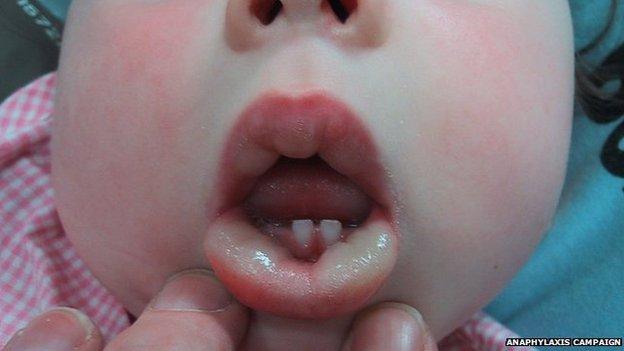Q&A: Anaphylaxis - severe allergic reactions explained
- Published
How to spot potentially life-threatening allergic reactions and how to deal with them
What is anaphylaxis?
What triggers anaphylaxis?
.jpg)
Allergies to nuts, fish and milk are more common in young people
How can you tell if someone is having an anaphylactic reaction?

There may severe facial swelling and flushed skin
What to do if you suspect someone is having an anaphylactic reaction

Adrenalin can help reduce swelling and make it easier to breathe
What happens next?

Call an ambulance if you suspect anaphylaxis, even if the person has already taken adrenalin
How dangerous is anaphylaxis?
- Published29 January 2014
Related internet links
The BBC is not responsible for the content of external sites.